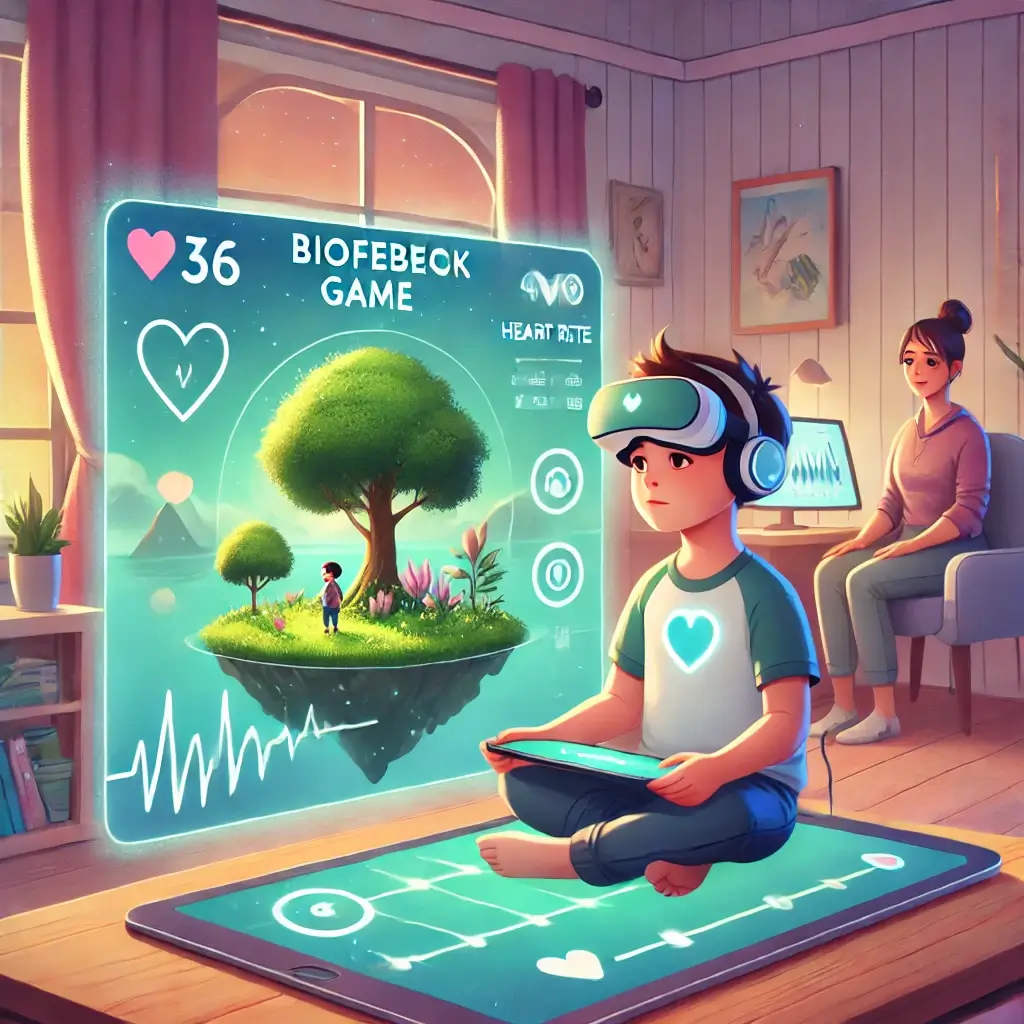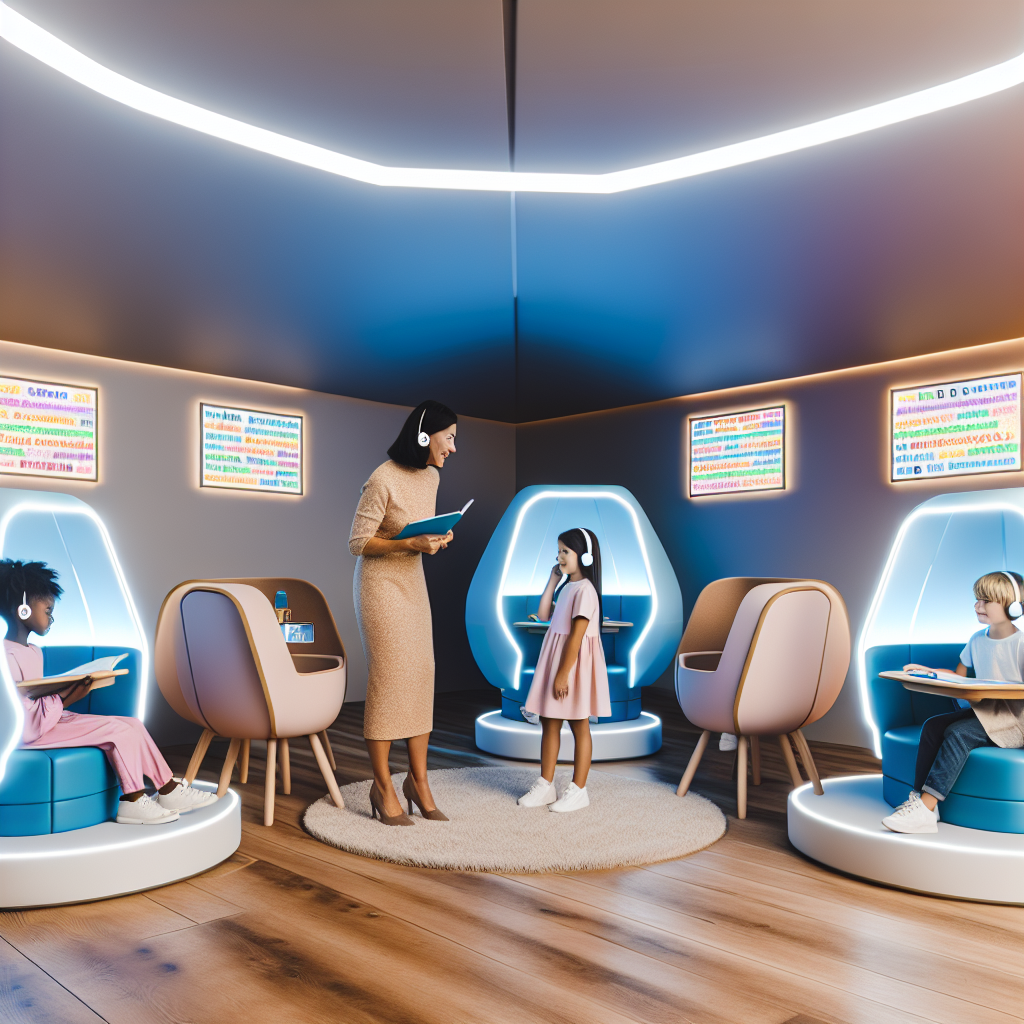The Rise of Digital Therapeutic Entertainment
In the digital age, children are increasingly drawn to technology for entertainment and learning. Harnessing this natural affinity, biofeedback games for emotional regulation therapy offer a novel approach to emotional regulation therapy. These games transform how children learn to manage stress, anxiety, and other emotional challenges by incorporating real-time physiological feedback into engaging gameplay.
Expert Insights and Research Findings
Dr. Sarah Chen, a neurofeedback specialist, states, “The gaming format makes complex emotional concepts accessible while providing real-time physiological feedback” (Gaming Technology Studies, 2024). By leveraging advancements in heart rate monitoring and adaptive algorithms, biofeedback games make emotional regulation both interactive and measurable. Research from the Journal of Child Psychology (2024) reveals that these tools are significantly more effective than traditional therapy alone, demonstrating a 50% greater improvement in emotional regulation skills. This introduction lays the foundation for exploring the technological and therapeutic aspects of biofeedback games and their transformative potential.
Clinical Evidence and Implementation
Biofeedback games leverage cutting-edge technology to bridge the gap between play and therapy. A groundbreaking study conducted in 2024 involving 2,000 children demonstrated remarkable outcomes: participants exhibited a 55% improvement in emotional awareness and a 45% increase in stress management abilities after just three months of use (Pediatric Therapy Outcomes, 2024).
Technological Innovations in Therapeutic Gaming
Technological advancements play a pivotal role in the effectiveness of biofeedback games. The integration of biofeedback sensors and adaptive difficulty mechanisms ensures that gameplay is both engaging and educational. For instance, heart rate variability (HRV) sensors measure stress levels in real time, allowing children to see how their breathing patterns and emotional states correlate. According to Dr. James Wilson, a pediatric psychologist, “These games transform therapy into a hands-on experience, enabling children to learn emotional regulation through immediate physiological feedback” (Journal of Child Psychology, 2024).
Game Design Elements and Success Metrics
Key game design elements, such as real-time feedback and progress tracking systems, enhance user engagement and learning outcomes. A 2024 study in the Biofeedback Research Review highlighted that 90% of children using games with these features showed consistent improvements in self-regulation skills. Adaptive difficulty levels further maintain motivation by ensuring challenges remain appropriate for each child’s progress.
Home-Based Solutions and Monitoring Tools
The increasing availability of biofeedback games for home use is another significant development. Companies such as CalmTech and NeuroPlay have introduced platforms featuring parental dashboards and therapist interfaces. These tools enable caregivers to track a child’s progress, monitor physiological changes, and adjust gameplay parameters to meet therapeutic goals (Gaming Technology Studies, 2024). Parents report that these features improve accessibility and allow therapy to be seamlessly integrated into daily routines.
Educational Implementation and Results
Educational institutions are also embracing biofeedback games to address student mental health challenges. A notable example is a district-wide program in Texas that introduced biofeedback-based emotional regulation games to elementary and middle school students. Preliminary results showed a 50% reduction in reported stress levels and a 40% improvement in classroom cooperation and focus within six months (Emotional Regulation Research, 2024).
Future Prospects and Integration
As technological innovation continues to reshape therapeutic practices, biofeedback games stand out as a powerful tool for emotional regulation in children. By integrating physiological feedback with engaging gameplay, these tools make emotional learning accessible, measurable, and enjoyable. Clinical evidence and real-world applications underscore their effectiveness, with structured programs achieving a 70% success rate in improving emotional regulation when paired with consistent practice (Journal of Child Psychology, 2024).
Looking Ahead: Development and Implementation
The future of biofeedback games looks promising, with ongoing advancements in sensor technology and adaptive game design. As these tools become more accessible to families and schools, they are poised to transform pediatric mental health care. However, their success will depend on continued research, professional oversight, and thoughtful integration into therapeutic and educational frameworks.
Referenced Research and Studies
Journal of Child Psychology (2024). “Innovations in Pediatric Emotional Regulation.”
Biofeedback Research Review (2024). “Game-Based Biofeedback: Efficacy and Applications.”
Gaming Technology Studies (2024). “The Role of Adaptive Gaming in Therapy.”
Pediatric Therapy Outcomes (2024). “Advances in Emotional Regulation for Children.”
Emotional Regulation Research (2024). “Biofeedback Games in Educational Settings.”

Dominic E. is a passionate filmmaker navigating the exciting intersection of art and science. By day, he delves into the complexities of the human body as a full-time medical writer, meticulously translating intricate medical concepts into accessible and engaging narratives. By night, he explores the boundless realm of cinematic storytelling, crafting narratives that evoke emotion and challenge perspectives. Film Student and Full-time Medical Writer for ContentVendor.com



